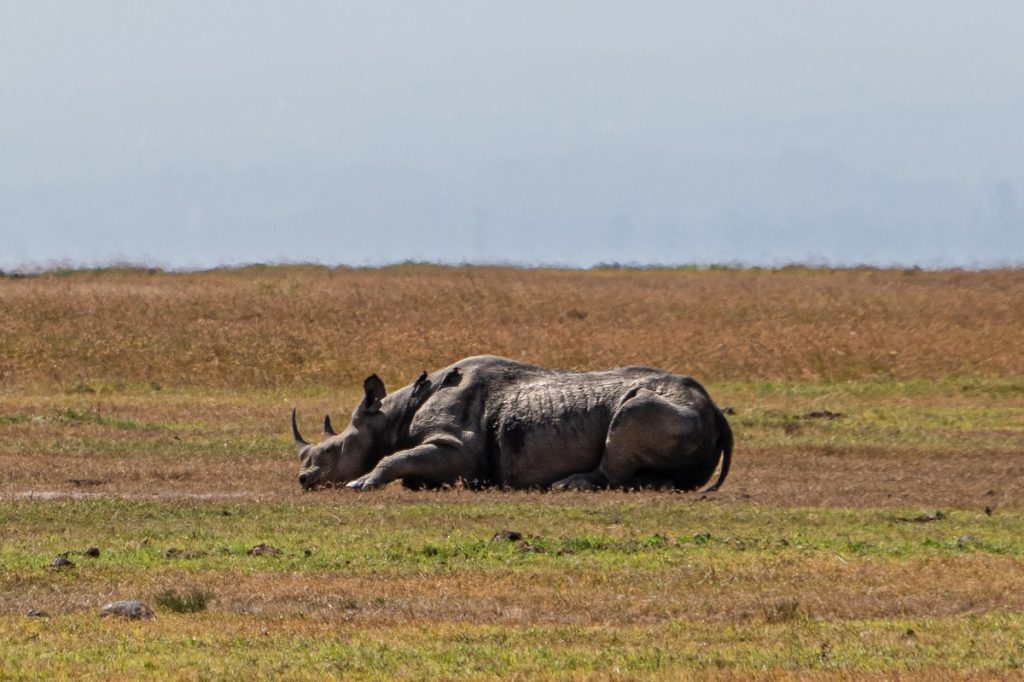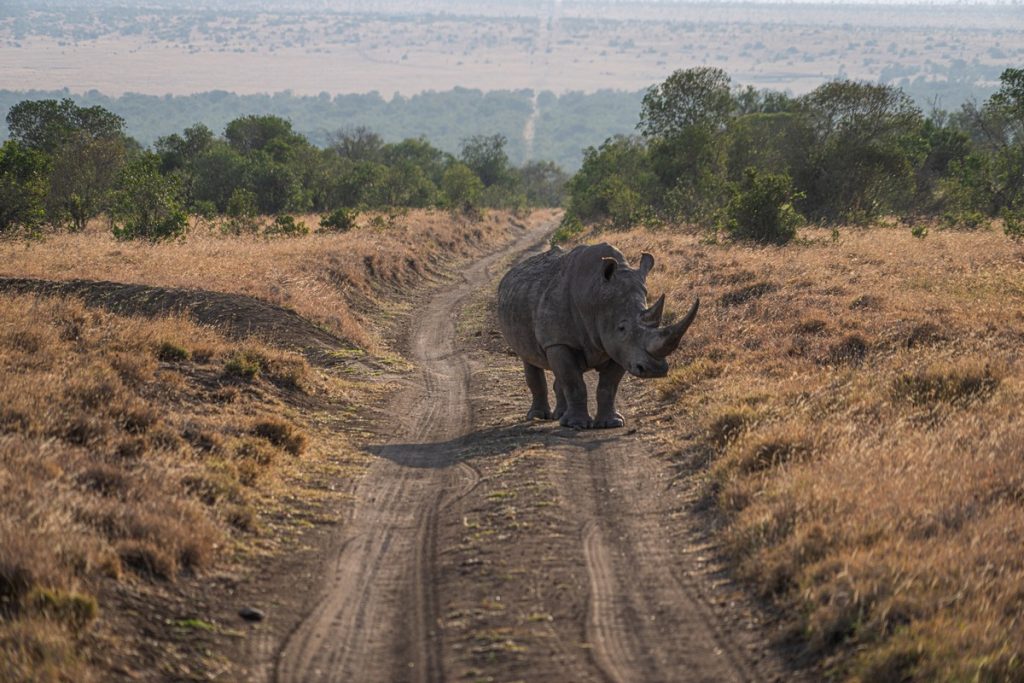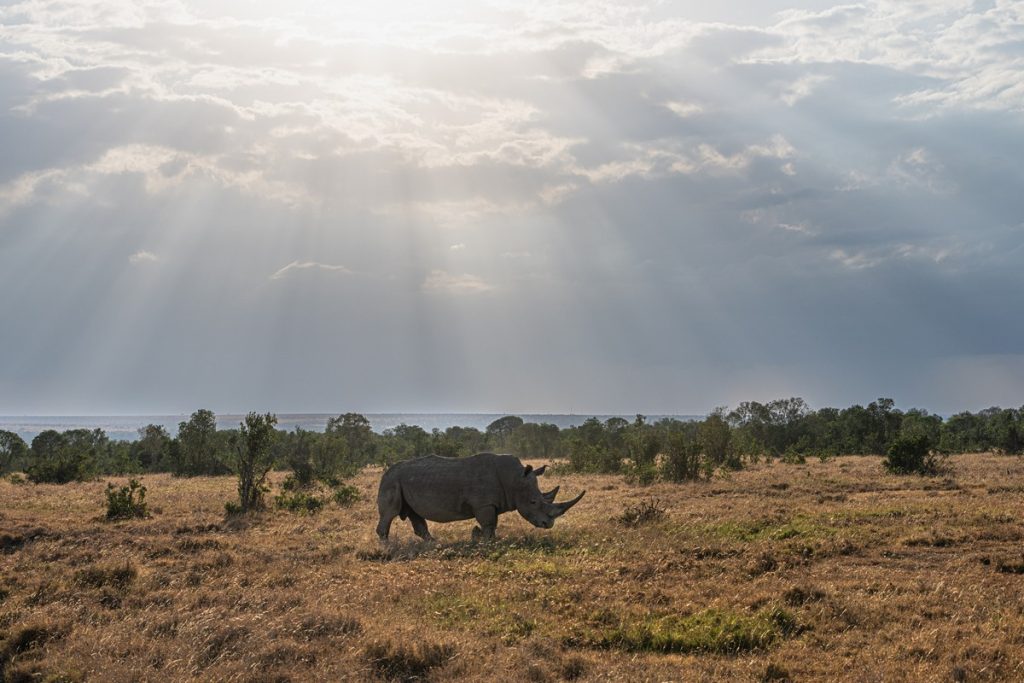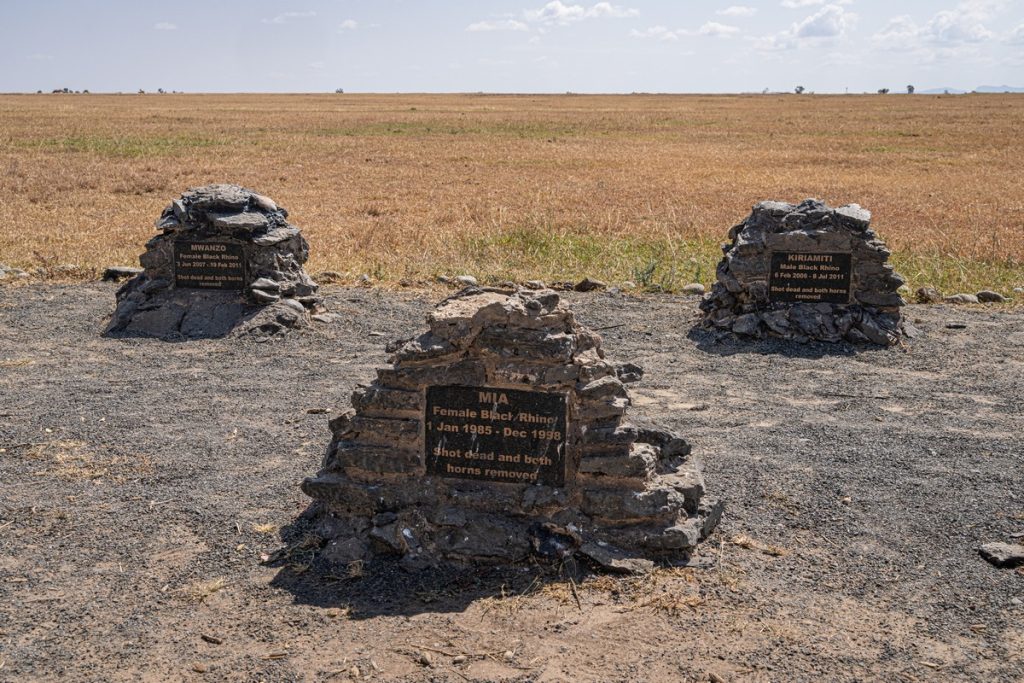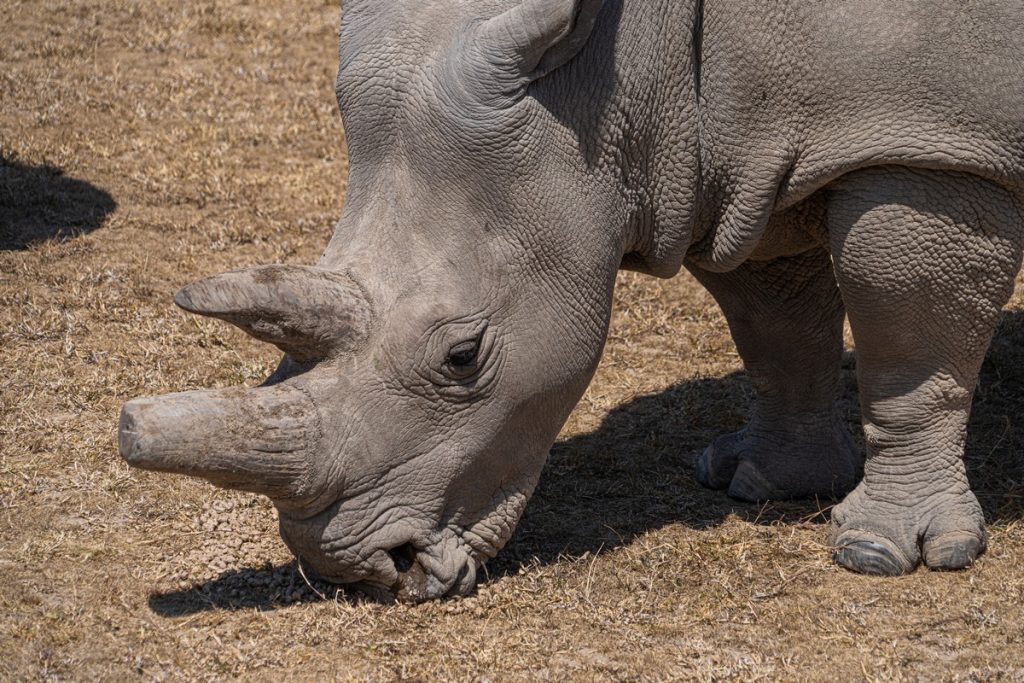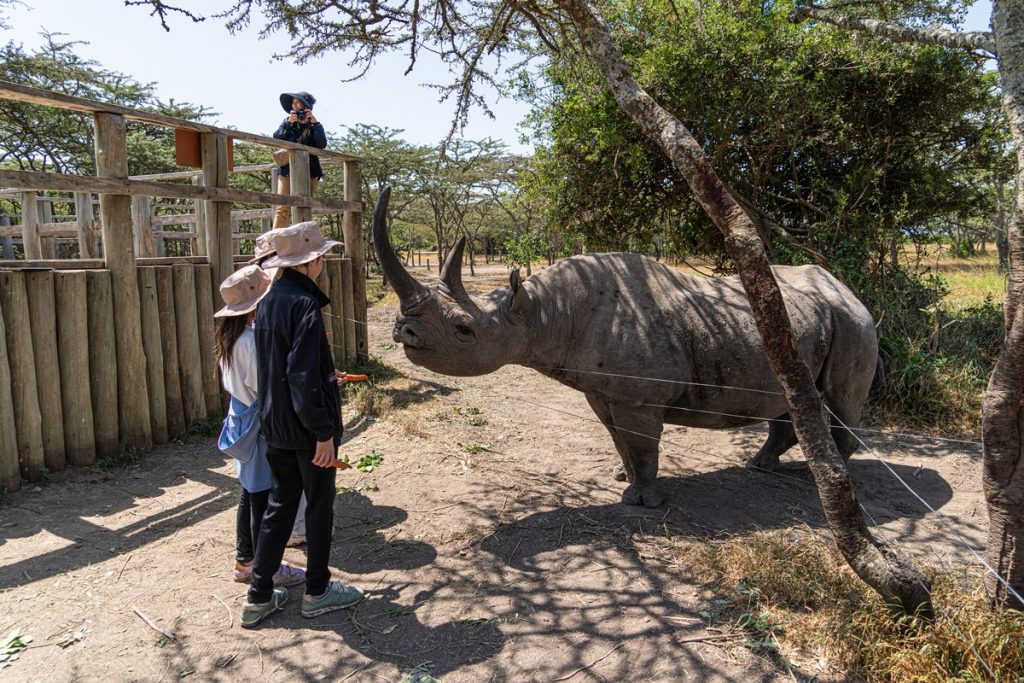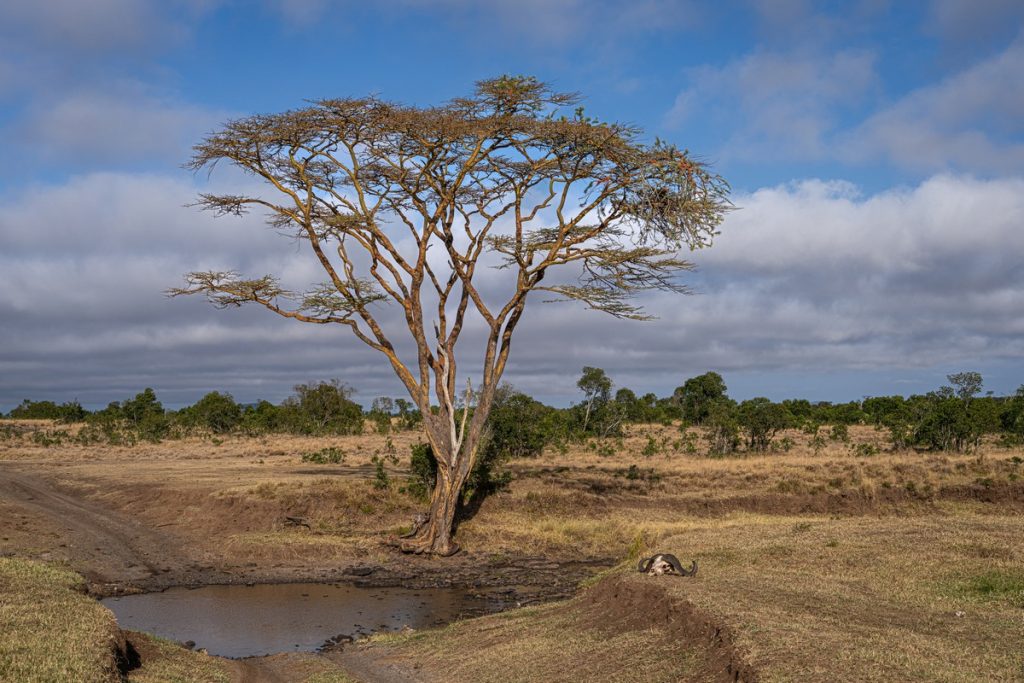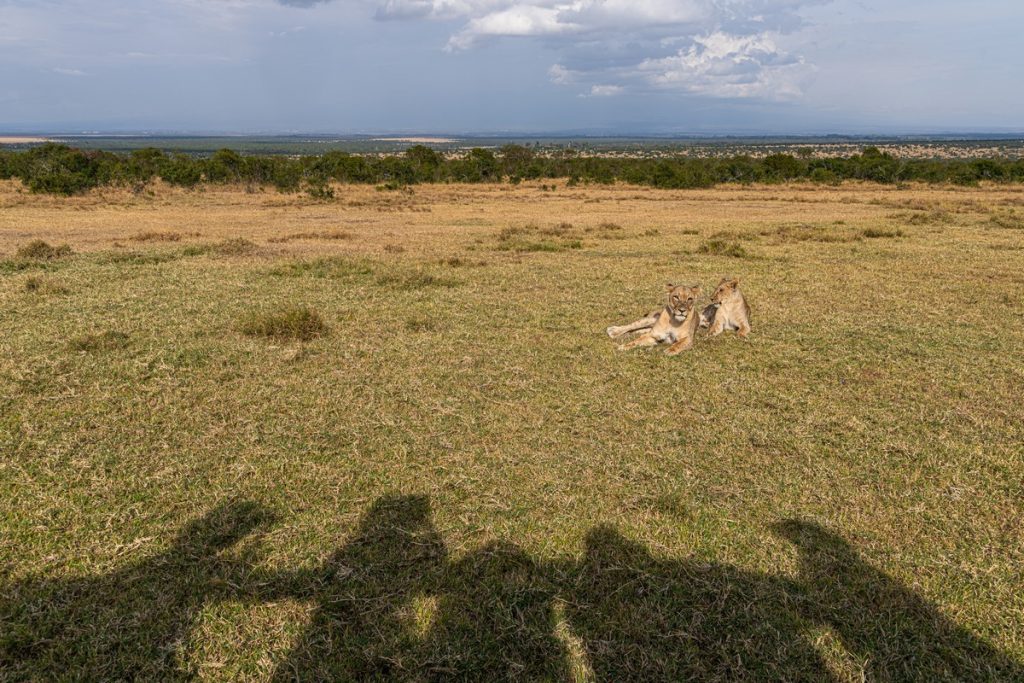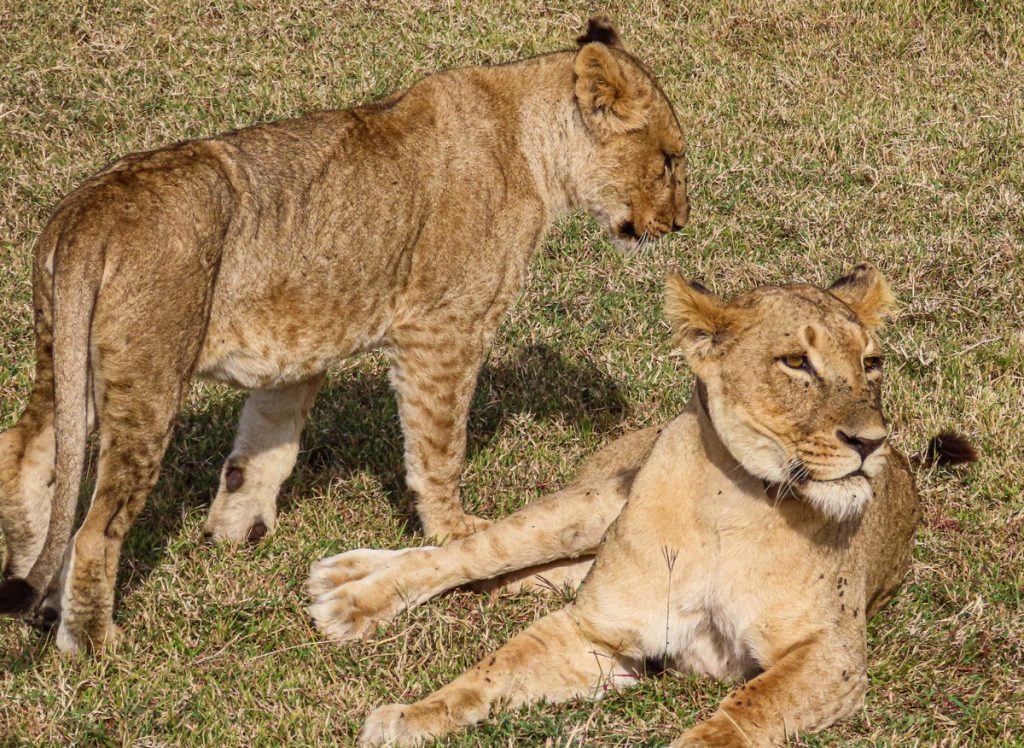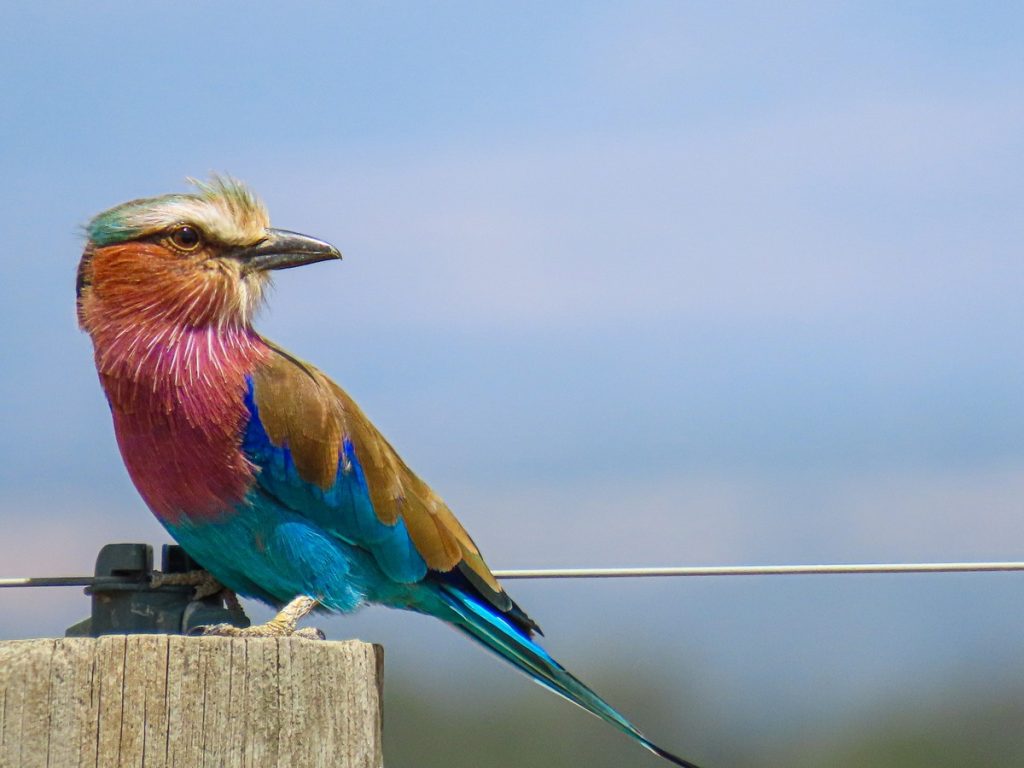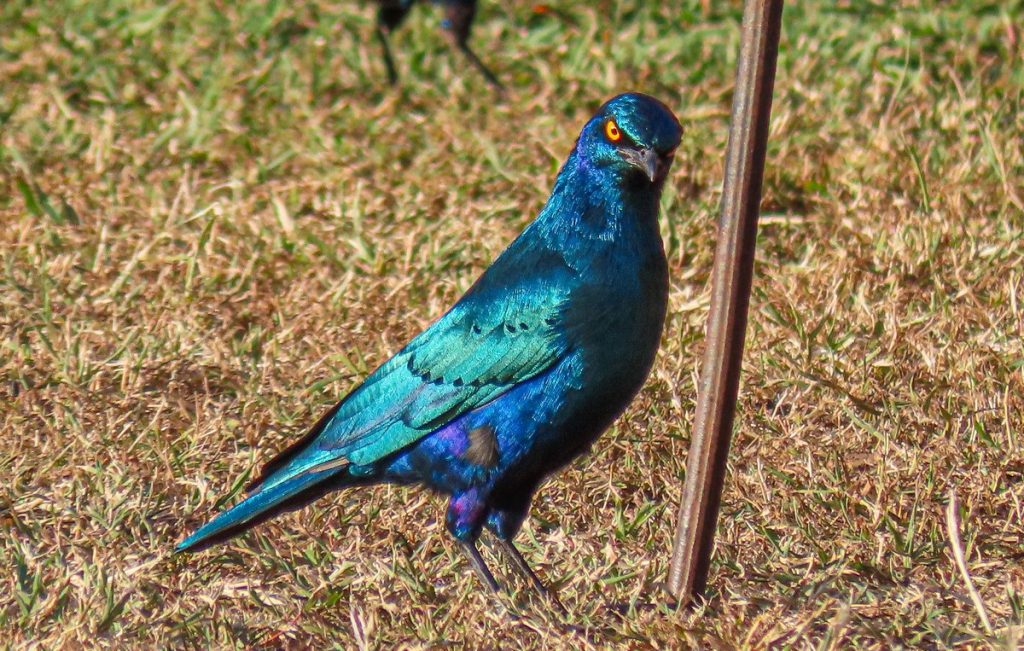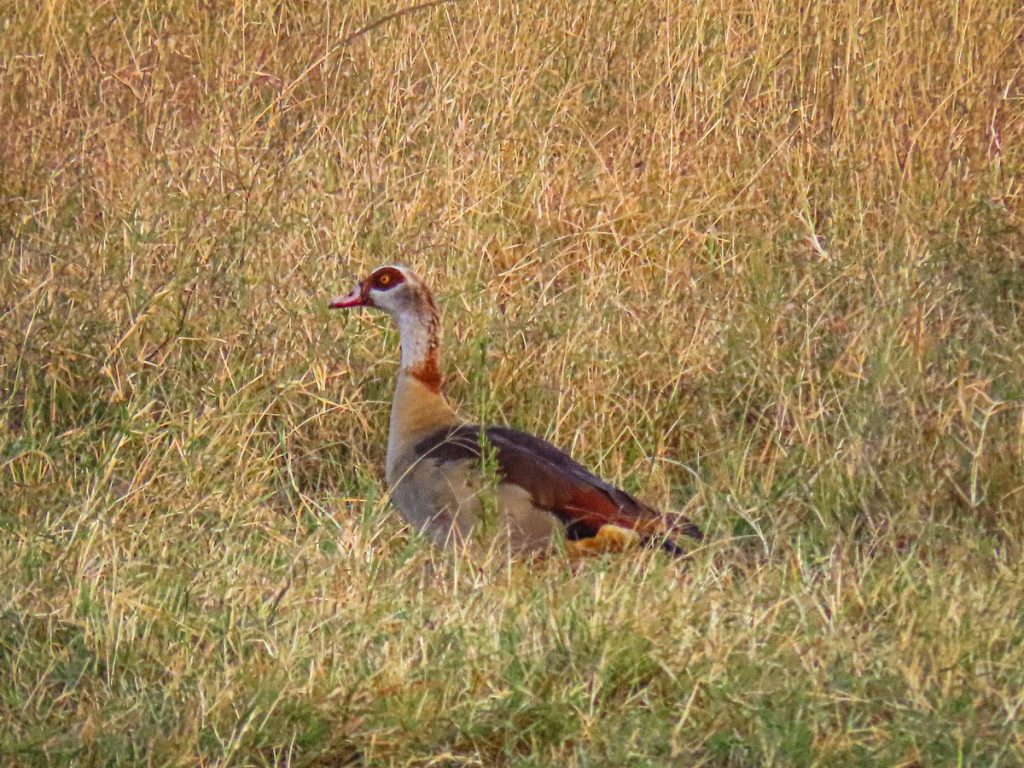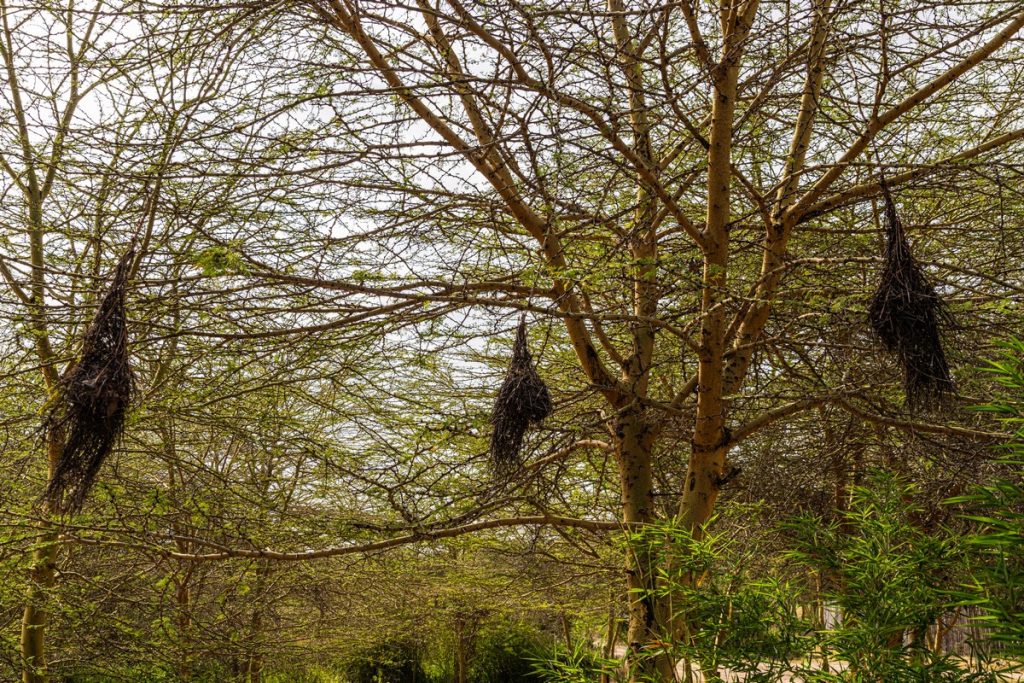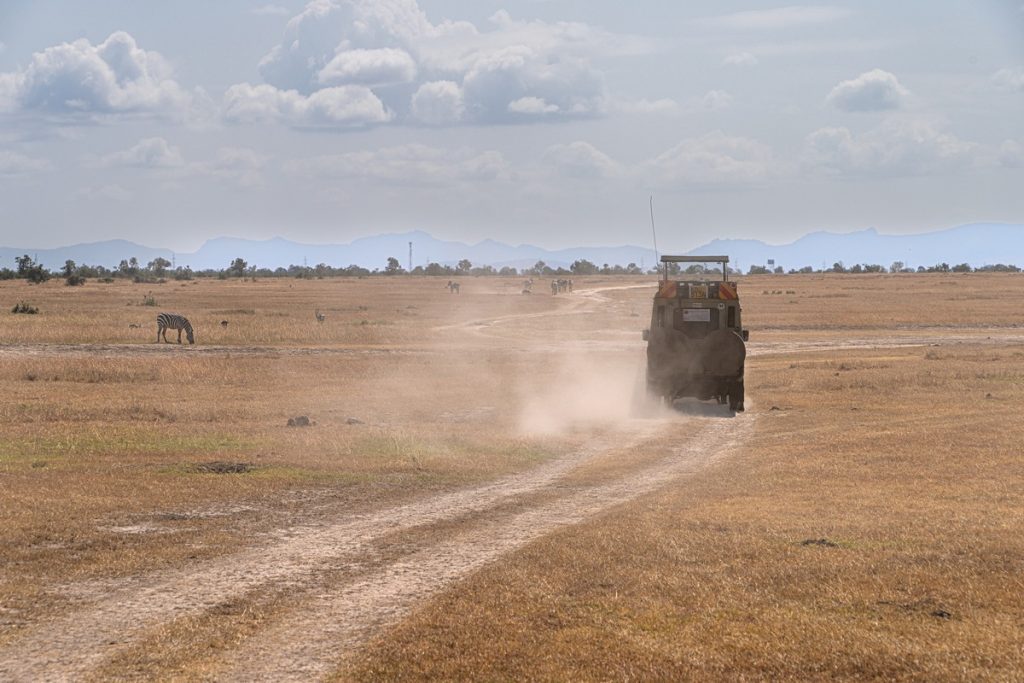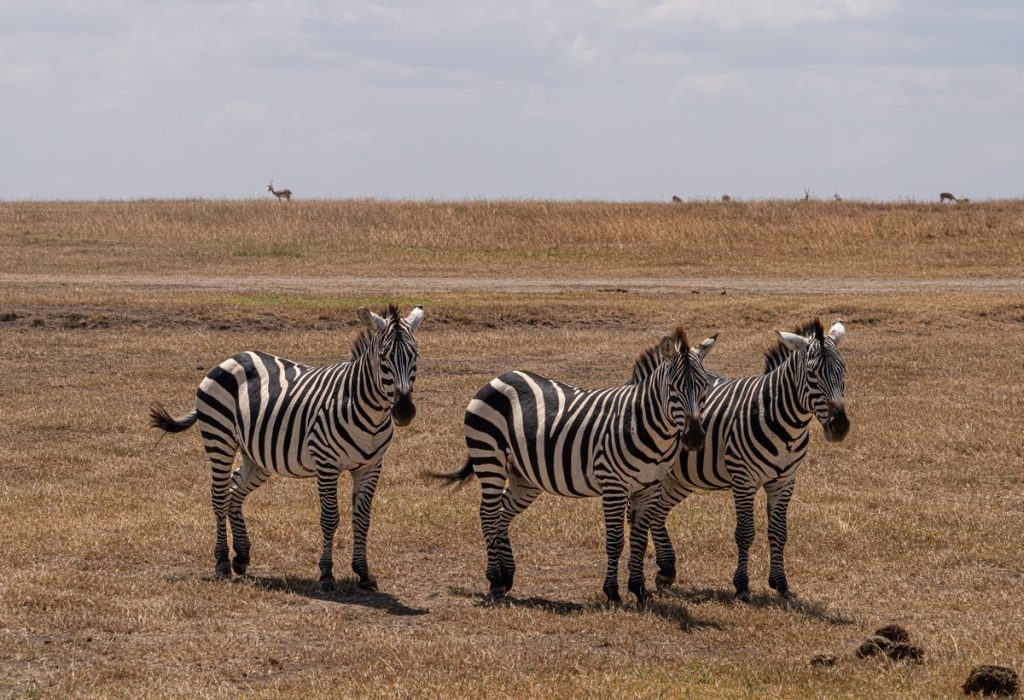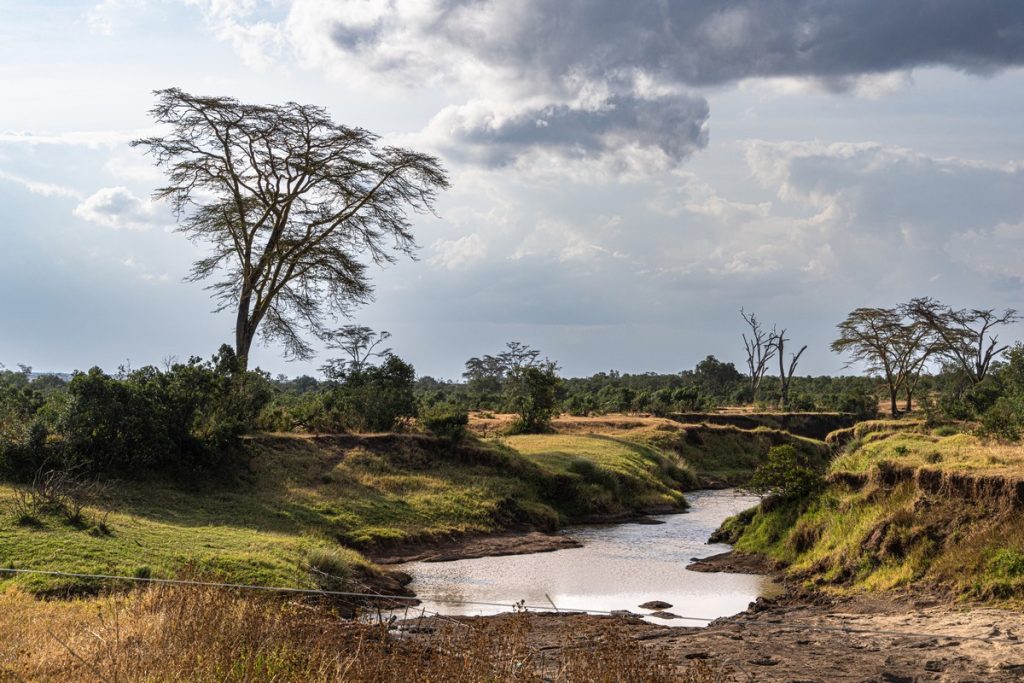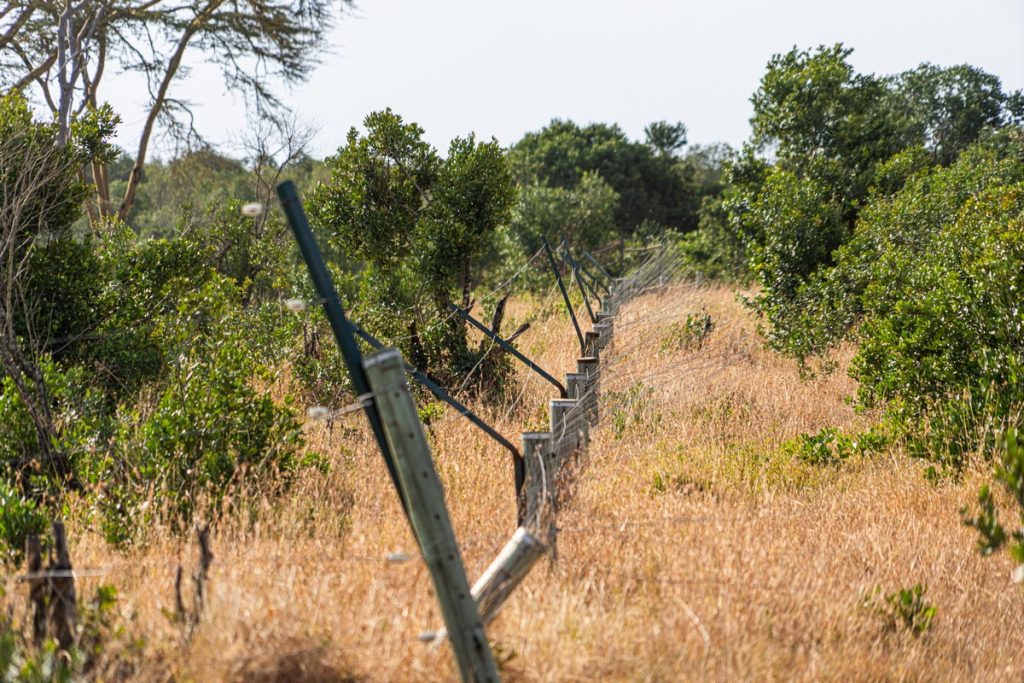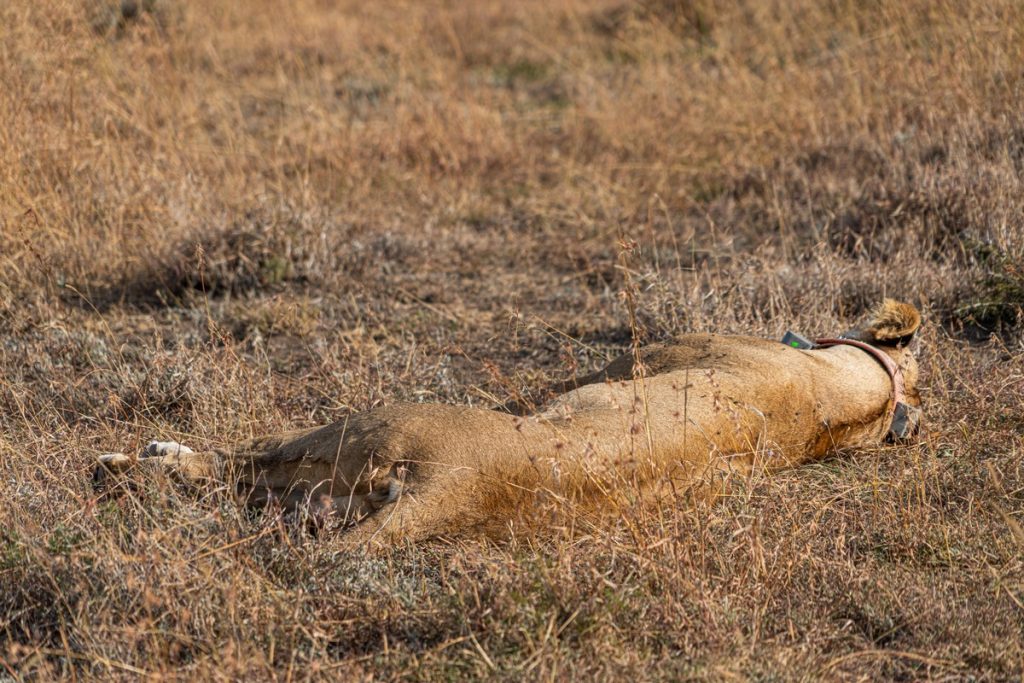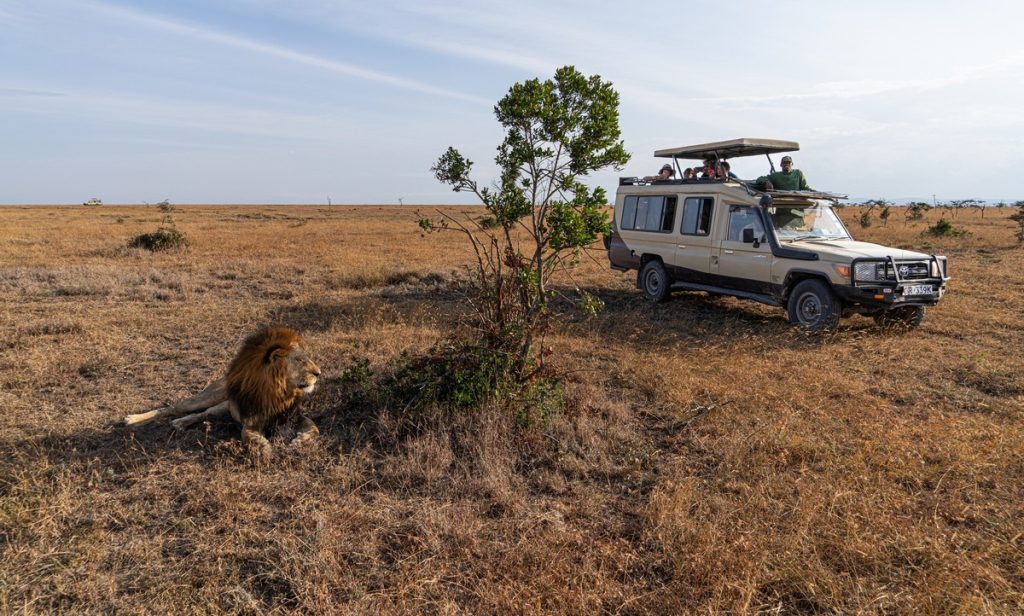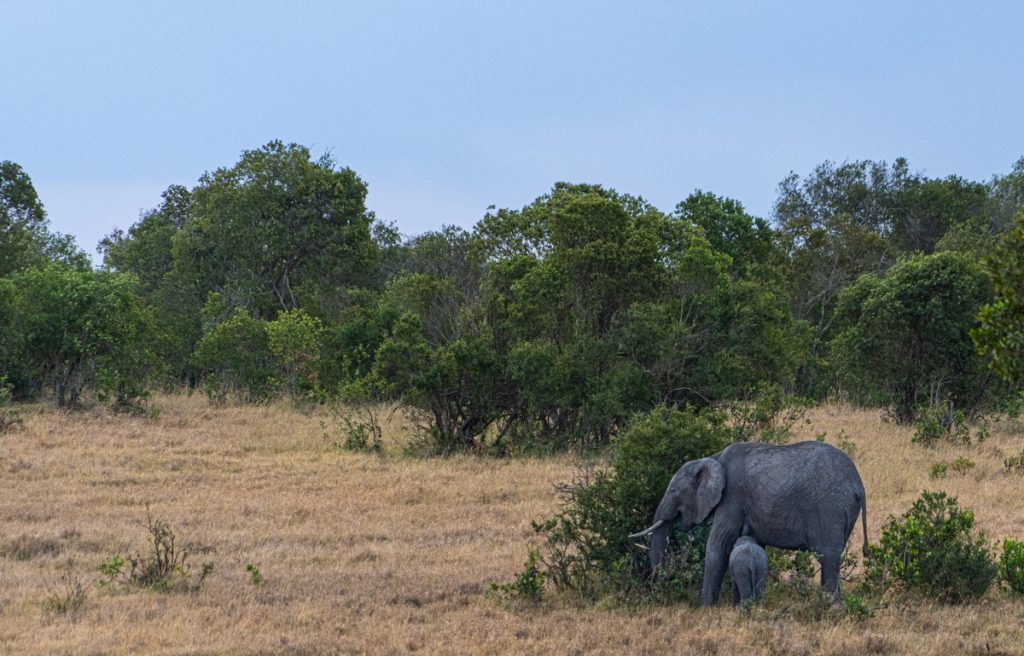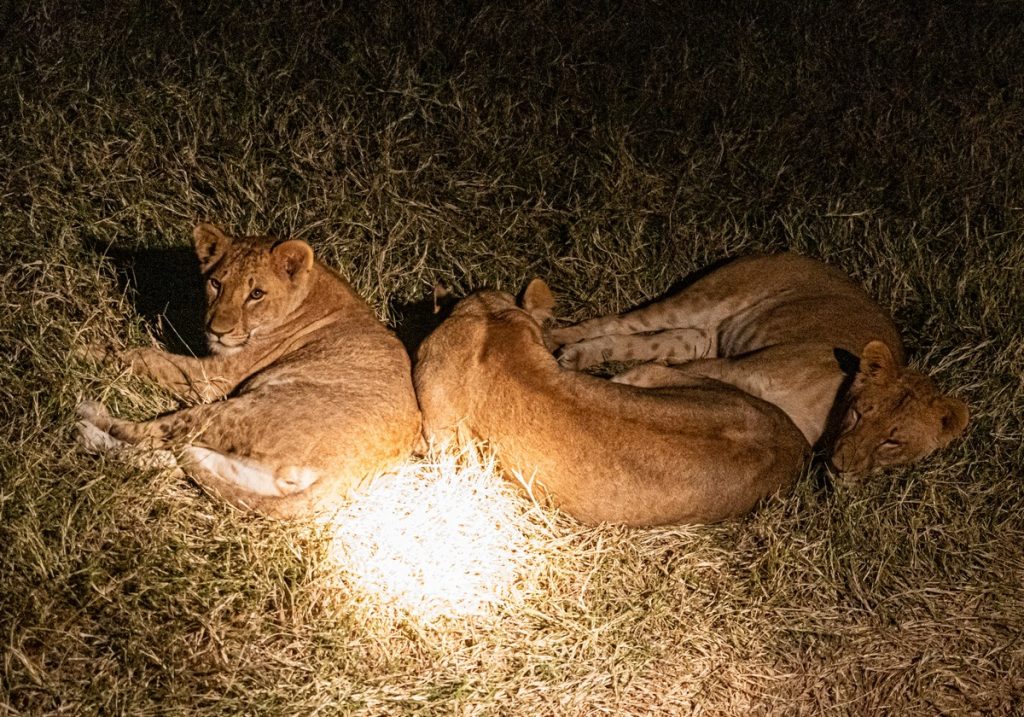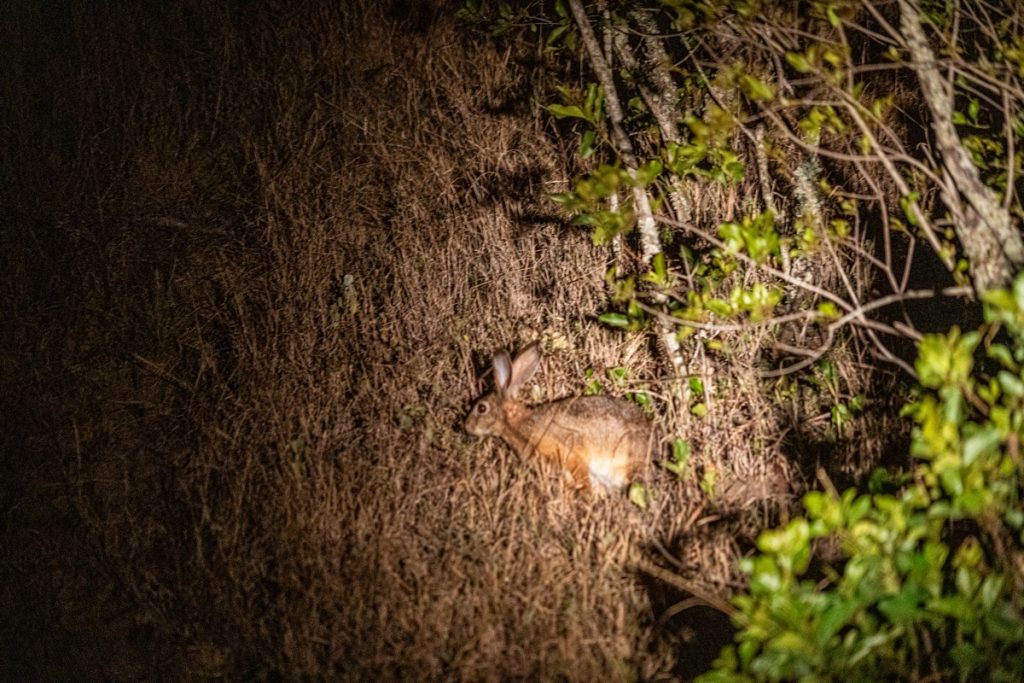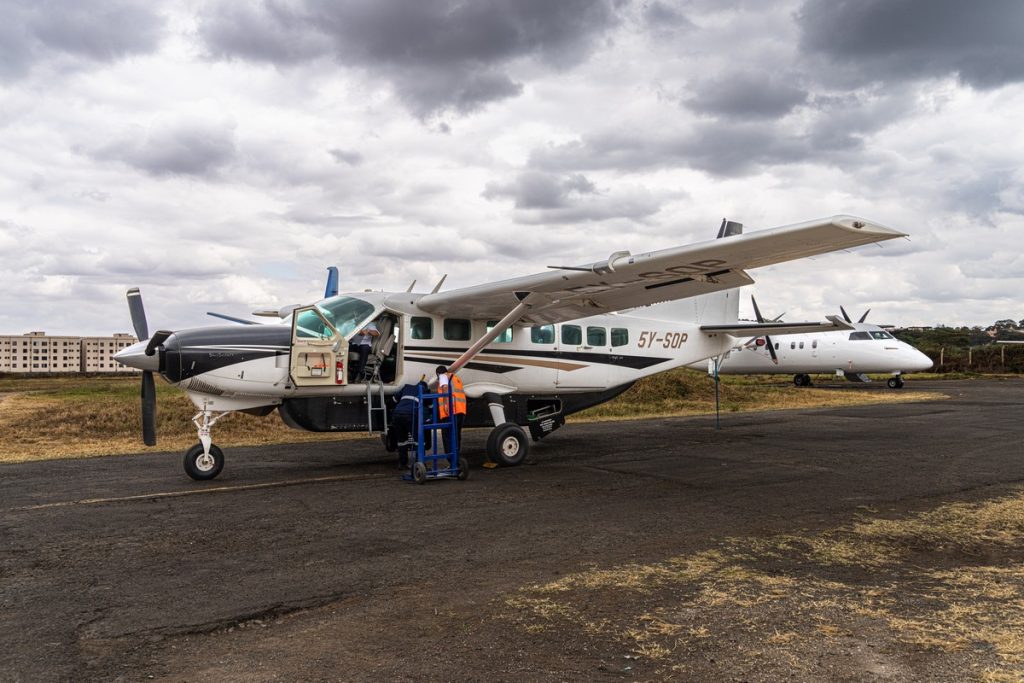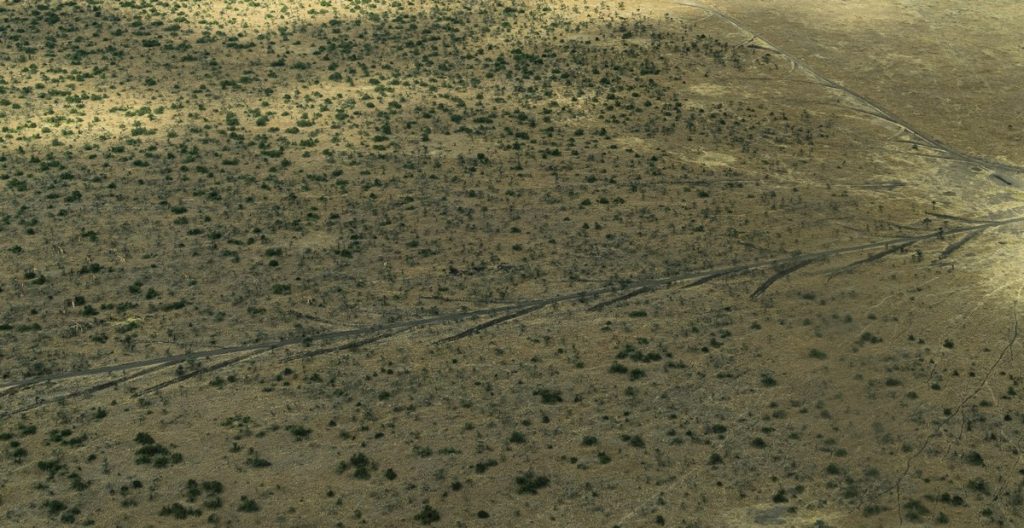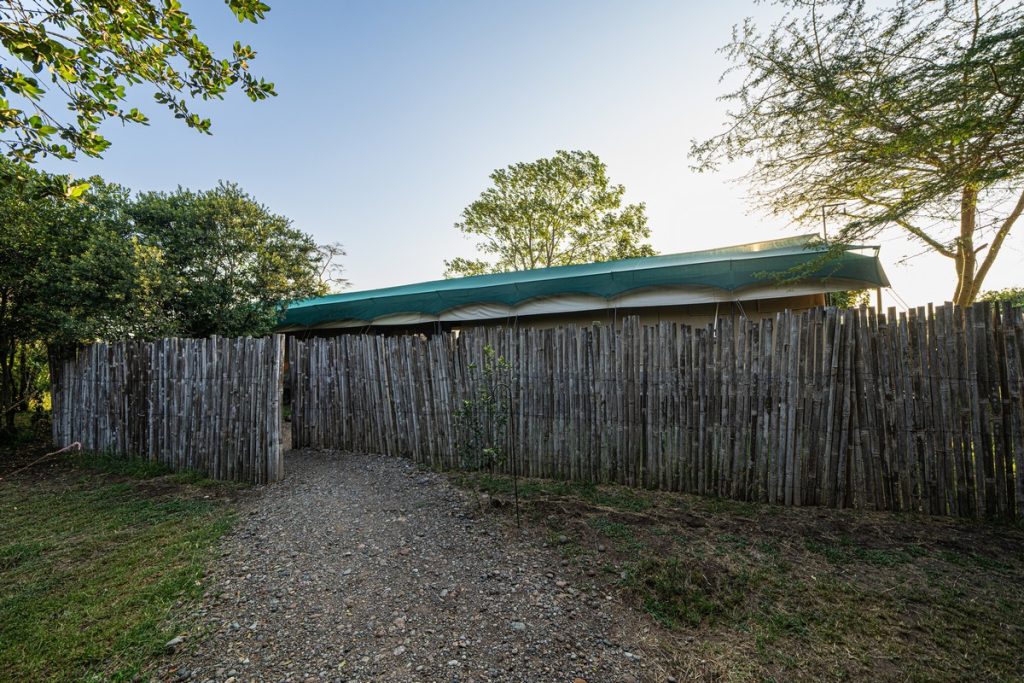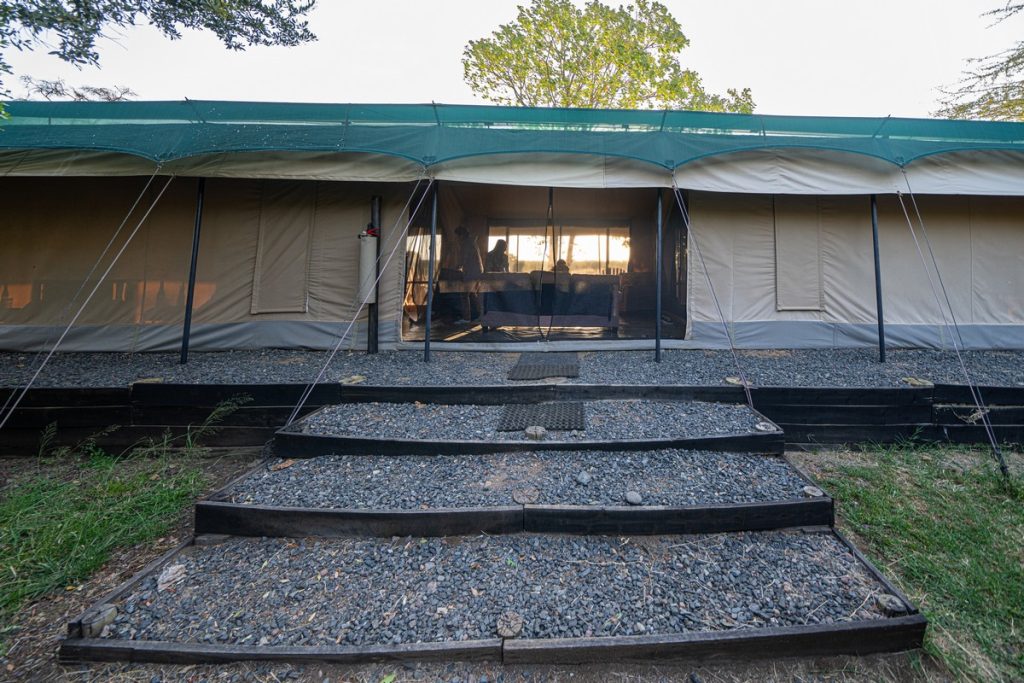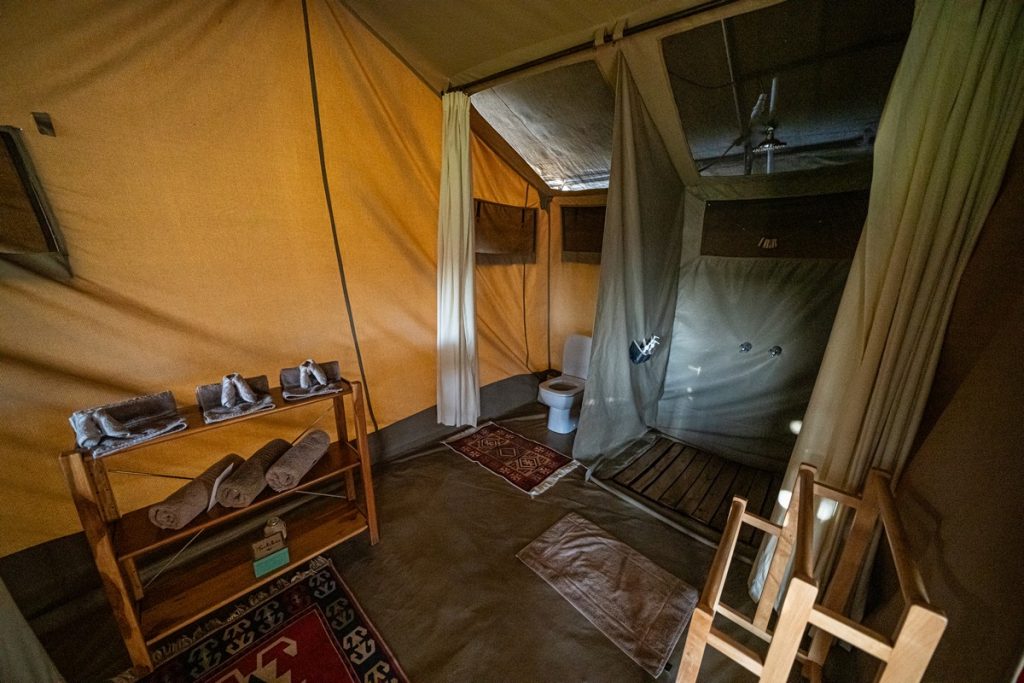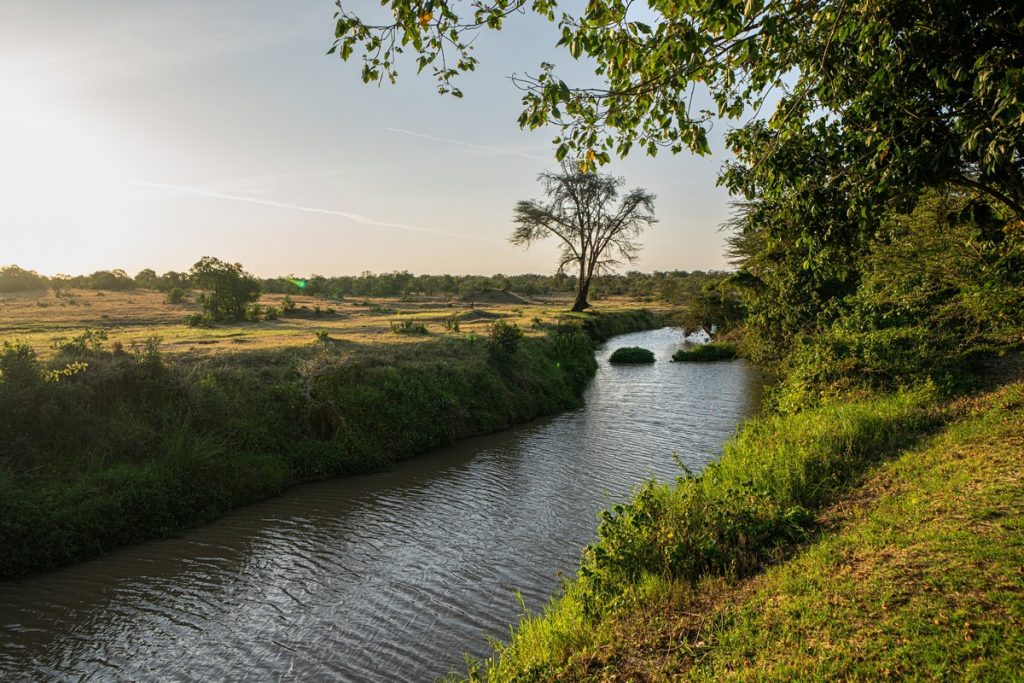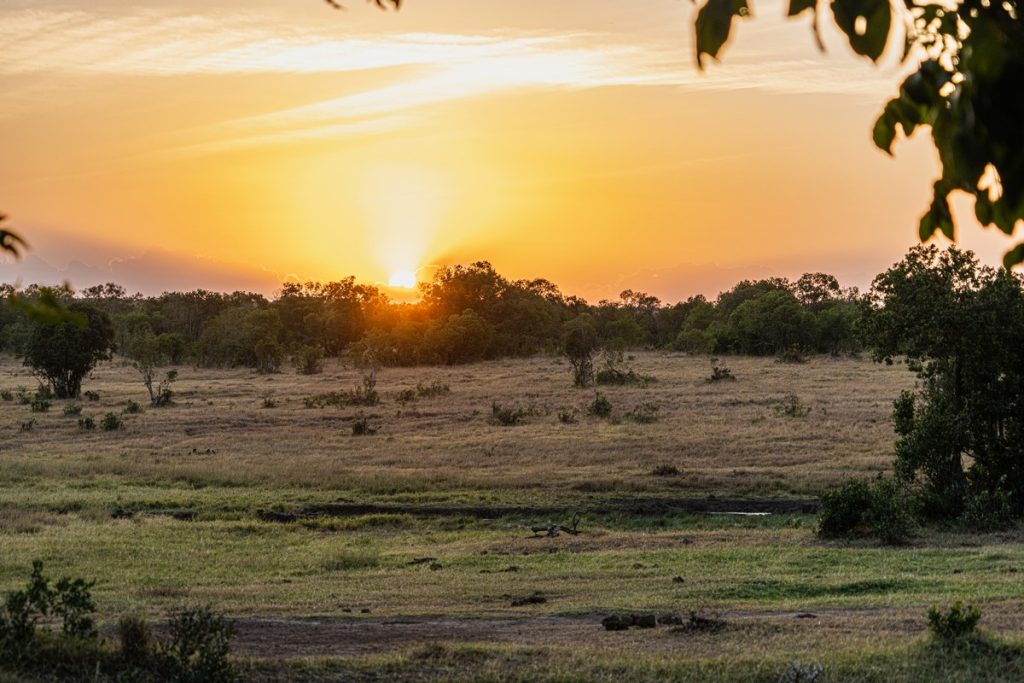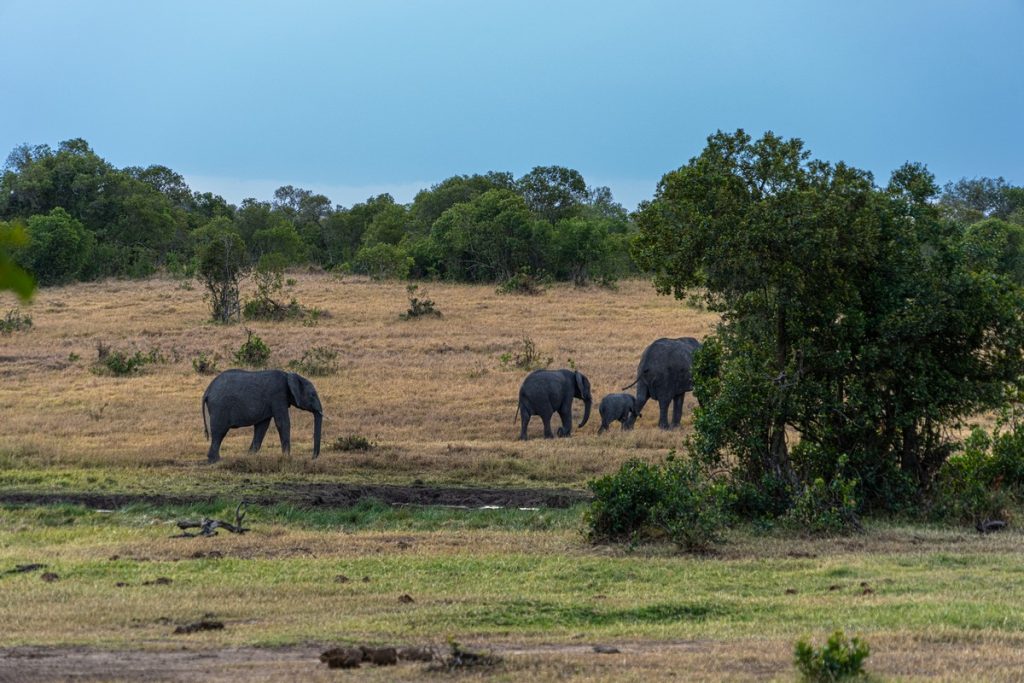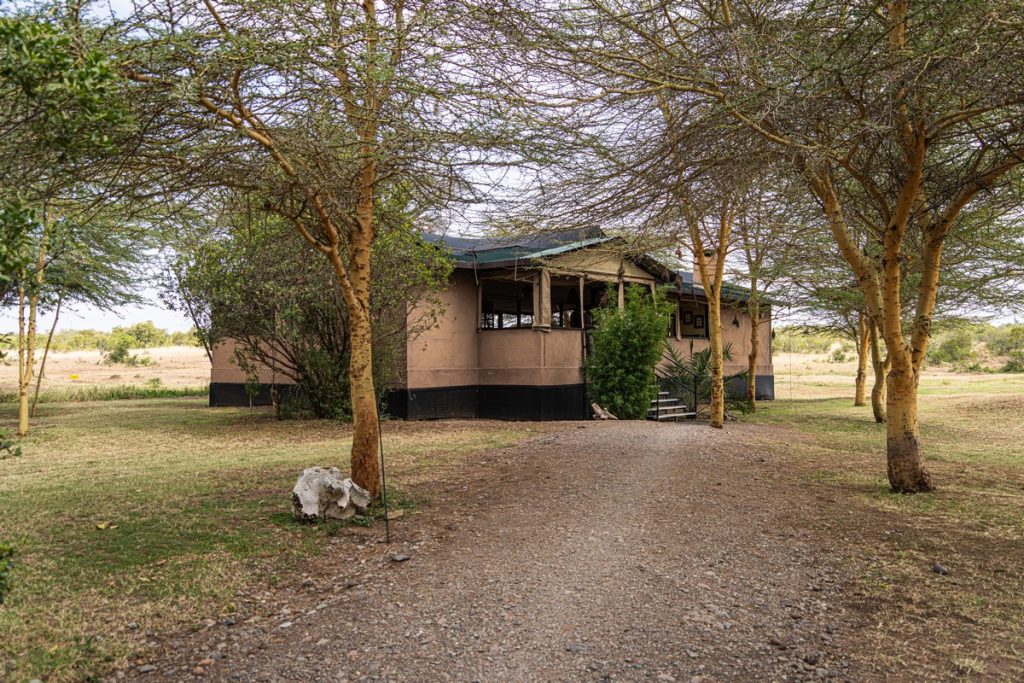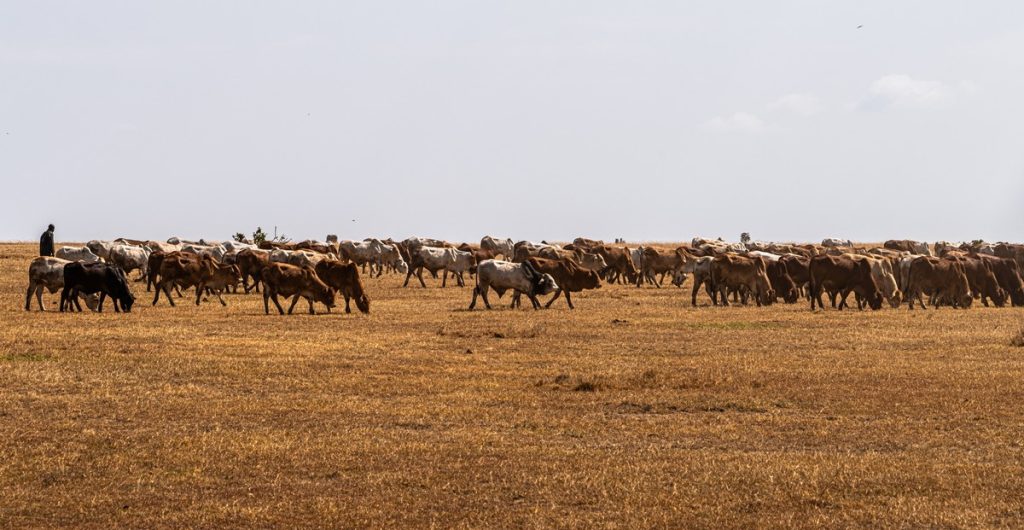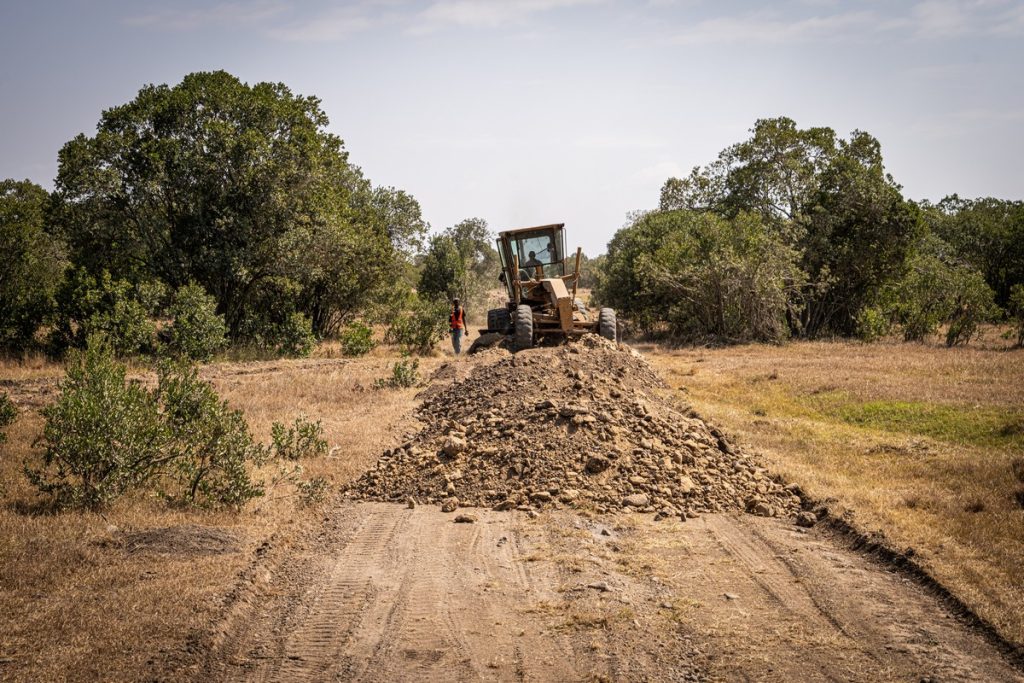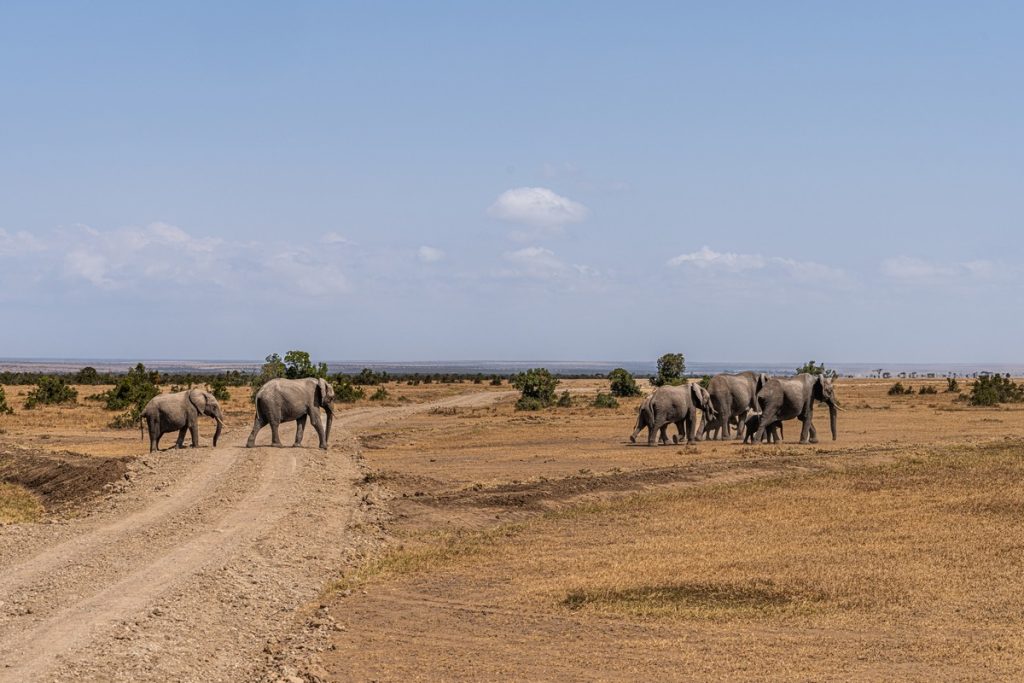September 4, 2023
African vacation – ver. 2023: Ol Pejeta Conservancy.
Farewell Nairobi; hello savanna-safari!…
But first – warning: coming up – tons of photos. But of course; for what was observed in the Kenyan savanna was just so exotic, varied, and often unique!… Don’t later say I didn’t warn you!…
Our first spot of safariing took place in the Ol Pejeta Conservancy – a conservation area crammed with marvelous mammals and wonderful winged creatures, whose main attraction is the rhinoceros – of which there are plenty…
Upon first seeing them – on the horizon, of course we slowed the Land Rover down and whipped out our zoom lenses and binoculars. Each and every rhino brought on rushes of emotions – and dozens snaps…
Of course we weren’t alone here, but at least there were a lot more rhinos than tourists )…
If the internet is to be believed, there are more than a hundred rhinos here; what’s more – there are two different species: the black rhinoceros and the white rhinoceros. However, the white rhino sure ain’t white. And quite how they can be distinguished from each other I don’t know. Of the latter species there are two sub-species here – the northern white rhinoceros and the southern; alas, the northern ones have practically died out: there are literally just two left – both female, but more about them later…
Mommy and her calf:
Up ahead – right in our path – approximately one ton of wild beast. We decide not to play chicken: we maneuver around. He’s in charge here :) ->
Btw, the rhino, as we found out here, is one of the oldest species of animal on the planet that still survives to this day. But how old*?… I’ll tell you at the end of this post. Before then, what’s your best guess?…
In traditional Chinese medicine, Rhino horn is highly-prized and sought-after. Whether it has any medicinal effect or not I don’t know. But since a lot of folks think it does, the poor rhino is slowly dying out from poaching – despite strict measures against it. Here’s a rhino cemetery ->
Cause of death practically every time: being shot, with the horns then sawn off. Tragic (.
The last two northern white rhinos here – that is, the last two on the planet – live in a special extra-protected enclosing, yet it seems the species’ imminent extinction is inevitable (…
Btw – the conservationists here trim, file down, and/or saw off the horns to stop them… being painfully naughty – perhaps to each other or to humans (?), but also to make them less-attractive to the poachers.
Woah – we could touch the rhinos right from our vehicle! ->
“What, no more tasty morsels? Then I’m off!”
…Until the next feeding ->
Alas, this one’s also got some health issues ->

Come morning, we pass a watering hole. Surely there’s wildlife near it…
Aha – buffalo! ->
Onward, in search of other beasts – which of course we find ->
A carcass of what looks like a buffalo getting picked at by smaller predators ->
But those little animals couldn’t have been responsible for felling that colossus. We look around… and soon find the likely suspects culprits, sitting pretty, post-feast, licking their chops! ->
A little farther – more lions; actually – lionesses: a mom and daughter (dad’s probably off somewhere with another mom). These two were really quite close to us ->
Some of the lionesses have tracking devices hung around their necks so their whereabouts can be monitored. All under control!
Flies – horrid things. Still, it seems the lions are used to them. Also, at least there are no tsetse flies around here – nor, in fact, in the whole of Kenya. In neighboring Tanzania – plenty.
A cackle of hyenas, with mom carrying out look-out duties from her burrow:
Ol Pejeta also features wonderfully-colored birds – like this one, which, when flying, is bright-blue-colored all over. An astonishing sight. Alas – I didn’t manage a pic ( ->
Such a stern stare! ->
This is an Egyptian Goose. We saw them so often I’ve remembered their name ) ->
Various birds and beasts:
Weaverbird nests:
Onward. Up ahead and to the sides – plenty more wild animals, but we’ve plenty more gigabytes of camera memory!
Sure – there are other tourists, but not too many…
The Three Musketeers ->
What a marvelous paysage. Most meditative ->
The reserve is split into zones for some reason with fences like this:
A romantic lion-couple sleeping:
The tracker’s clearly visible here:
What a beaut! ->
Getting up close ->
Dusk approaching, it’s time to call it a day…
Back at the ranch, we observe elephants again ->
We tried some night-safariing, but were fairly disappointed. Safariing is best done by day – for sure ->
But at night we did see a hare – invisible by day given the overabundance of predators both large and small ->
Another unpleasantry: the chimpanzee enclosing. The chimps had been confiscated from smugglers, or caught – sick – out in the wild. However, behind the wire fence they didn’t seem too happy with their lot one bit ->
So, yes – here in the national park there are a great many big fat plusses; however – they’re not without a few slightly obese minuses…
In closing – a few words on the transportational/logistical-&-lodgings-&-eats situation here…
The flight from Nairobi to the national park took around 45 minutes – in the plane in the following pic. No complaints though – its size makes it nimble enough to be able to use short, basic, ill-equipped runways – where larger craft simply can’t… ->
Aerial-view savanna – with the landing-strip we were to fly into somewhere on it ->
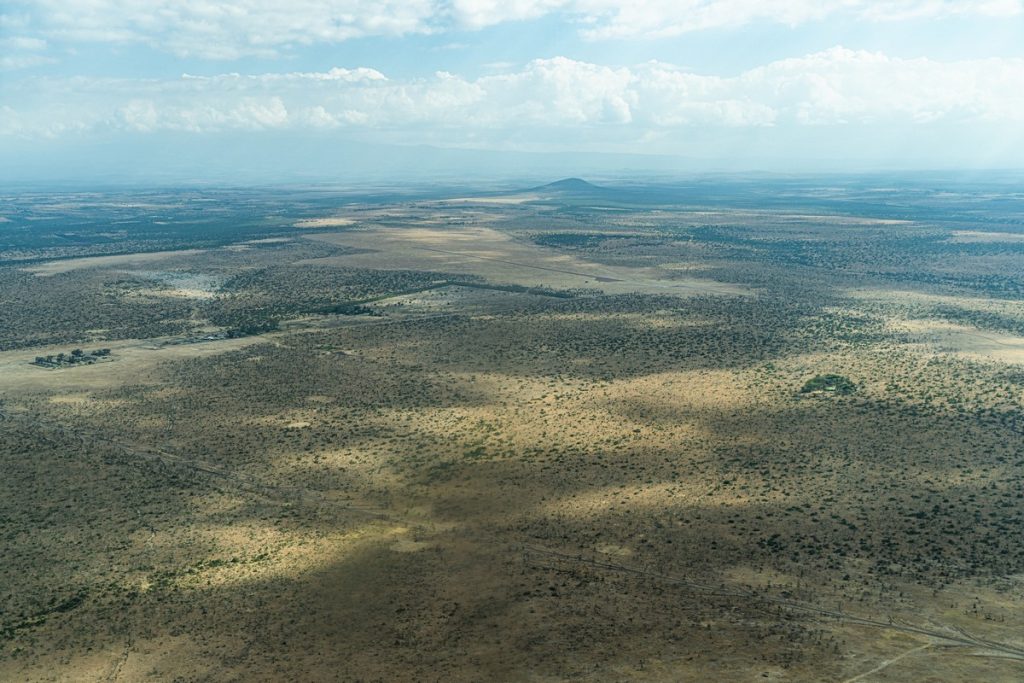
Btw – can you see those trenches dug along the roads, each at around a 20-degree angle therefrom? Turns out they’re there so when it rains buckets – which it does occasionally – the roads don’t get flooded. Road drainage system – Kenyan savanna style ) ->
Having flown in, we headed off to Asilia Ol Pejeta Bush Camp, whose fence that surrounds it suggests it’s probably not a good idea to walk alone around the camp at night! ->
Interesting lodgings: literally a big tent:
Inside: comfortable and rather cozy. Sleeping quarters to each side of the living room tent. We were three adults + three kids, so three + three beds:
Essential facilities – all present and correct:
And the view outside – oh my gorgeous! Bizarrely, we could have been in the countryside outside Moscow! ->
Sitting on these here armchairs waiting for the sunset was sublime. Highly recommended!
All good things come to those who wait:
Suddenly the Moscow-region countryside comparisons vanish! ->
The next morning, breakfast was served in this here restaurant (which doubles up as the camp’s administrative building). And since Kenya is a former British colony, we were served… full English breakfast!
Oof – prickly! Just how do the elephants and giraffes manage grazing on those?! ->
Curiously, in addition to the wild animals here, there are also domesticated farmed animals – but they’re all Euro-farm animals! African fauna doesn’t do domestication (more on this)! ->
“Roadworks”, Kenyan style ) ->
And more elephants – lots more. But our elephant best-bits were still to come. Btw, elephants too can’t be domesticated, even though they’re intelligent. As to why – see that book again (fascinating).
And that was Ol Pejeta folks; it was time for us to be heading out further on our safari. Sorry for the over-abundance of snaps; saying that – expect plenty more!…
All the pics from Kenya are here.
PS: *The rhino species is around 30 million years old!


